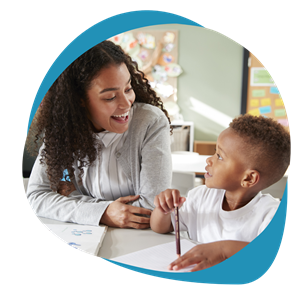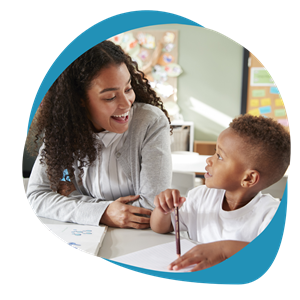How to Be Responsive: 2 Key Steps
By Danielle Boaden, Speech Language Pathologist and Andrea Koohi, Hanen Staff Writer



Studies show that, while the amount of language a child hears is a good predictor of the amount of language she will later use, an even better predictor is the amount of language she hears in response to what she had said or done first.
Becoming a responsive interaction partner can be a challenging shift for both parents and professionals. But when we make that shift, the lasting, positive impact on children’s development is undeniable.
Here are two steps you can take to pave the way for responsive interactions with children:
Step 1 – Let the Child Lead
First, you need provide opportunities for the child to
start the interaction. This will give you something to respond to. You can do this by:
Getting face to face – Make it easier for young children to look right into your eyes, so you can connect more easily and share the moment.
The next step in letting the child take the lead is to OWL™:
Observe – Watch the child carefully, paying close attention to what he says or does. This tells you what the child is interested in.
Wait – When you wait, you wait in silence, giving the child time to initiate or to show interest in something. This allows the child to take the lead in the interaction.
Listen – Rather than thinking about what to say next, listen – without talking – to what the child says and let that guide your response. This lets the child know that you are genuinely present and focused on them, and that what they have to communicate to you is important.
Read more about the OWL strategy
Step 2 – Respond immediately with interest
Once you
OWL and the child takes the lead in the interaction, it’s now time to respond with interest to what the child has communicated. You can do this by:
Responding immediately, showing your interest – When a child starts an interaction by sending a message of any kind – a look, a smile, a sound, a body movement, a gesture or a word – it's important to respond immediately with interest. In doing this, you are building the child's confidence, and this encourages her to respond back to you.
Responding based on what the child is interested in rather than what you think is important – This makes it easier for children to stay in the interaction.
To sum up
Whenever your goal is to encourage responsive interactions, always start with
OWL, and then respond immediately with interest. These key steps form the bedrock for the kinds of interactions in which children’s language learning can flourish.
Back to student portal
Reference: Weitzman, E. (2017).
It Takes Two to Talk: A Practical Guide for Parents of Children with Language Delays, 5th ed. Toronto, Ontario: The Hanen Centre.